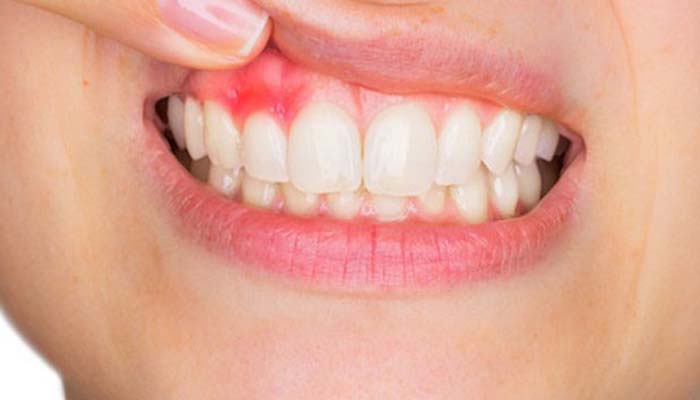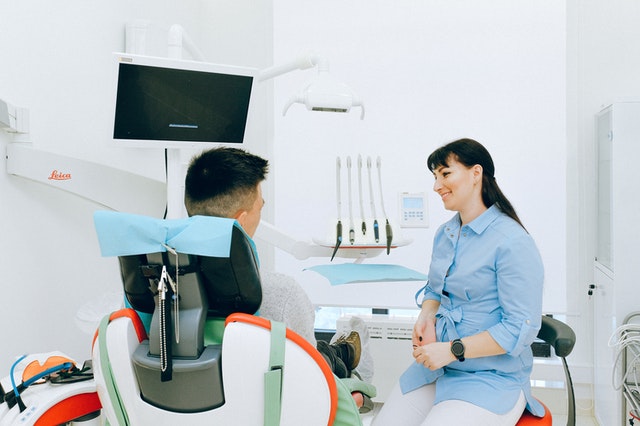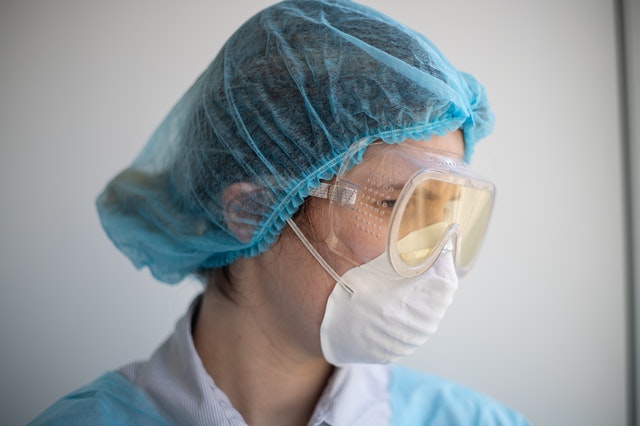
When gum disease is left untreated, it can cause early tooth loss and lead to advanced periodontal disease. Periodontal disease occurs when the tissue and bone that support the teeth are destroyed. As a result, pockets will form around the teeth, which will become deeper if left untreated. This causes bacteria to develop in the pockets that can eventually lead to tooth loss.
However, if periodontal disease is treated in its early stages, treatment can prevent damage from becoming too serious. When periodontal disease is more advanced, it can be treated with a variety of professional hygiene techniques. This may include non-surgical treatment, medication, and gum surgery. Your general health and how you responded to earlier treatments can help your dentist decide which course of action will be the most effective.
Non-Surgical Treatment for Periodontal Disease
With non-surgical treatment for periodontal disease, your dentist will remove the tartar and plaque that has accumulated on the surface of the teeth. When patients are in the early stages of periodontal disease, a professional dental cleaning may be enough to adequately treat the condition. However, it tartar has reached beneath the gums, root planing and scaling may be required.
Scaling and Root Planing
This treatment is a type of deep cleaning that has two steps. First, your dentist will remove the tartar and plaque that is above and below the gum line. This ensures that the teeth are clean down to the bottom of the pocket. Then, your dentist will start root planing. This will smooth out your teeth roots and help your gums attach to your teeth. It may take more than one visit to complete the entire process, and your dentist may recommend local anesthesia.
Treatment With Medication
Antimicrobial medication and antibiotics may be used to treat gum disease. These products may include medicine that is inserted into the pockets after scaling and root planing, mount rinses, or toothpaste that is made for treating periodontal disease.
Surgery for Advanced Stages of Periodontal Disease
There are many surgical options for treating periodontal disease, which include:
1. Periodontal Flap Surgery
When periodontal disease has become severe, periodontal flap surgery may be required for effective treatment because the bone tissue and ligaments that surround the teeth are diminishing. It is one of the most commonly used treatments for periodontal pockets.
A dentist will administer this procedure by folding back the gum tissue and removing the bacteria from the pockets. After all of the bacteria has been removed, the tissue will be secured back into place. In addition, some patients will need to have uneven and damaged bone smoothed to prevent bacteria from resurfacing. This procedure will allow the gums to better attach to even, healthy bone.
2. Gum Graft Surgery
Gum grafts may be used cover the roots, which have excessive exposure from periodontal disease. During this procedure, a dental professional will take donor tissue from your palate to cover the exposed root. Depending your gum line, one tooth or several teeth may need to be treated.
3. Bone Grafts
When a periodontist administers a bone graft, he or she will fold back the gums and clean the bacteria from the dental pockets. Next, the bone graft will be inserted into the problem area, which will cause new bone growth.
4. Guided Tissue Regeneration
Guided Tissue Regeneration (GTR) will typically use membranes that are place over the bone. This procedure is usually accompanied with bone grafts. There are certain circumstances where a barrier will be placed over the bone area that has diminished. The barrier will effectively separate the bone from the soft tissue, which gives the bone adequate space to grow. GTR materials are resorbable and non-resorbable. If you have this procedure done with a non-resorbable material, it will require an additional procedure to have the material removed.
Recovery From Surgery for Periodontal Disease
After surgery for periodontal disease, it is expected to experience minor bleeding. It is recommended that a gauze be placed in you mouth for a few hours following the procedure. There could be swelling for 24-48 hours following the surgery, but this can be minimized by apply an ice pack on your face for 15 minute intervals.
Discomfort is normal after the procedure, which is why you may be advised to take pain medication before the local anesthesia fades. Your dental professional will prescribe you pain medication to ease the pain and discomfort that can be seen in the days following the procedure. You will also be prescribed an antibiotic to prevent infection as well as anti-inflammatory medication to reduce swelling.
If you have dissolvable sutures, it should take one to two weeks for them to dissolve. When non-dissolvable sutures are used, your periodontist will remove them during your post-operative examination.
It is imperative to avoid alcohol for the first full day following the surgery. In addition, you shouldn’t smoke for for at least two weeks following the procedure because it can significantly hinder the healing process.
A diet of soft foods is usually recommended for the first two weeks after the surgery, which will minimize injury to the treated site. Soft foods that your dental professional may recommended could include:
- Yogurt
- Ice cream
- Milk shakes
- Baby food
- Oatmeal
- Soups and broths
For periodontal disease treatment in King of Prussia, PA, seek care from skilled periodontists at the King of Prussia Periodontics & Dental Implants. The experienced team of dental professionals can provide you with exceptional treatment and address any underlying cause. To schedule a consultation with Dr. Marissa Crandall Cruz or Dr. Mana Nejadi, visit website at www.kopperio.com.




